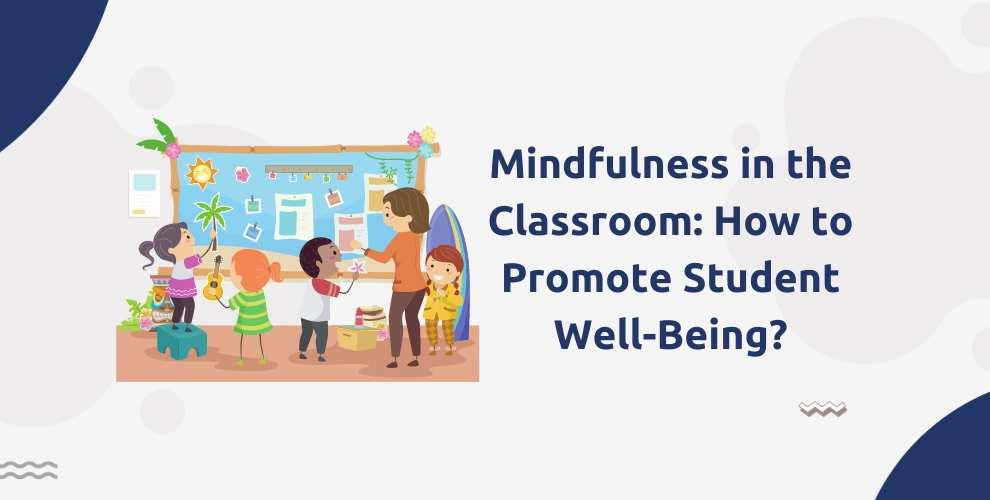How Mindfulness is Transforming Education: Benefits, Strategies, and Classroom Impact
In today’s fast-paced educational landscape, the need for well-rounded approaches to student success has never been more apparent.One innovative practice gaining widespread recognition is mindfulness in education. By equipping students and educators with tools to enhance focus, emotional regulation, and resilience, mindfulness is transforming the way learning happens in schools worldwide. In this in-depth article, we explore the benefits of mindfulness in education, share practical classroom strategies, and examine the real-world impact of these practices.
the Rise of Mindfulness in Education
Mindfulness—the practice of intentionally paying attention to the present moment without judgment—originated from ancient contemplative traditions but has found a new home in modern classrooms. With increasing evidence supporting its transformative effects, many schools are integrating mindfulness practices for students into their daily routines.
- Increased academic pressure and social challenges have led educators to seek holistic solutions.
- Research on mindfulness in schools reveals improvements in student well-being and classroom climates.
- nationwide initiatives and professional growth programs are helping educators incorporate these practices effectively.
Benefits of Mindfulness in Education
Mindfulness goes beyond helping students relax; it positively influences cognitive, emotional, and behavioral outcomes. Here are some of the most compelling benefits of practicing mindfulness in education:
Cognitive Benefits
- Improved concentration and focus: Regular mindfulness exercises enhance students’ attention span, supporting better academic performance.
- Enhanced executive function: skills such as working memory, cognitive flexibility, and self-control are strengthened, laying the foundation for lifelong learning.
Emotional and social Benefits
- Reduced stress and anxiety: Mindfulness helps students manage overwhelming emotions, promoting resilience and mental well-being.
- Better emotional regulation: Students learn to respond thoughtfully rather then react impulsively, equipping them for positive peer interactions.
- Increased empathy and compassion: Mindful practices nurture social-emotional growth, fostering a sense of community in the classroom.
Behavioral and Academic Impact
- Fewer behavior problems: Mindfulness strategies reduce disruptive behaviors and improve classroom management.
- Higher engagement and motivation: Students become active participants in their learning journey.
- Positive academic outcomes: Improved attention, reduced absenteeism, and higher test scores have all been linked to consistent mindfulness practice.
Proven Mindfulness Strategies for the Classroom
Integrating mindfulness into the classroom doesn’t require major curriculum overhauls. here are some effective, research-backed strategies teachers can use:
-
Mindful Breathing Exercises:
Begin or end each lesson with a few moments of deep, focused breathing. This practice can definitely help calm nerves, center attention, and signal a mental shift between activities.
-
Guided Mindfulness Meditations:
Audio or teacher-led meditations—ranging from a few minutes to longer sessions—can be used to ground students, especially during stressful periods such as exams or transitions.
-
Body Scan Activities:
Lead students through gentle check-ins with different parts of their bodies. This strategy not only builds self-awareness but can help identify and address tension or discomfort.
-
Mindful Journaling:
Encourage students to write about their thoughts, emotions, or experiences in a non-judgmental way. Mindful journaling fosters reflection and emotional growth.
-
Gratitude Practices:
Starting or ending the day with expressions of gratitude cultivates positivity and resilience in the classroom community.
Tip: Consistency and student choice are key. Offer a variety of mindfulness techniques and allow students to find what works best for them.
Case Studies: mindfulness in Action
Real-world examples illustrate the transformative power of mindfulness in classrooms:
Brooklyn Urban Middle School
after implementing a daily mindfulness program, students reported lower levels of test anxiety and demonstrated improved on-task behavior. Teachers noted a calmer classroom atmosphere and fewer conflicts during transitions.
California Elementary Pilot
Educators integrated short mindful breathing and gratitude exercises into their morning routines. The result? Better student focus, increased participation, and a significant reduction in disruptive incidents.
National studies support these findings, showing that schools invested in mindfulness education see notable gains in social-emotional learning, attendance, and academic achievement.
First-Hand Experience: Teacher and Student Voices
“Adding short mindfulness breaks completely changed the tone of my classroom. My students are more alert, less distracted, and the overall energy is so much more positive.”
— Ms. Alvarez, 4th Grade Teacher
“Whenever I get nervous, I remember to focus on my breathing.It helps me calm down so I can do my best on tests.”
— Alex, 7th Grade Student
Tips for Successfully Integrating Mindfulness Into Schools
- start small: Begin with short, simple mindfulness exercises and gradually expand as comfort grows.
- Provide Training: Offer professional development and resources to help teachers feel confident and equipped.
- Encourage buy-In: Share research, case studies, and student testimonials with staff and families.
- Make It inclusive: Adapt mindfulness activities to meet the diverse needs of all students, regardless of background or ability.
- Assess and Adapt: Regularly gather feedback and adjust practices to maximize impact and engagement.
Conclusion: The Future of Mindfulness in Education
The growing body of evidence demonstrates that mindfulness in education isn’t just a trend—it’s a transformative approach benefiting students, teachers, and whole school communities. by integrating mindfulness strategies into the classroom, educators can foster environments that support academic success, emotional intelligence, and lifelong resilience. As more schools adopt these practices, the promise of a more mindful, compassionate world is within reach—one student and one classroom at a time.

